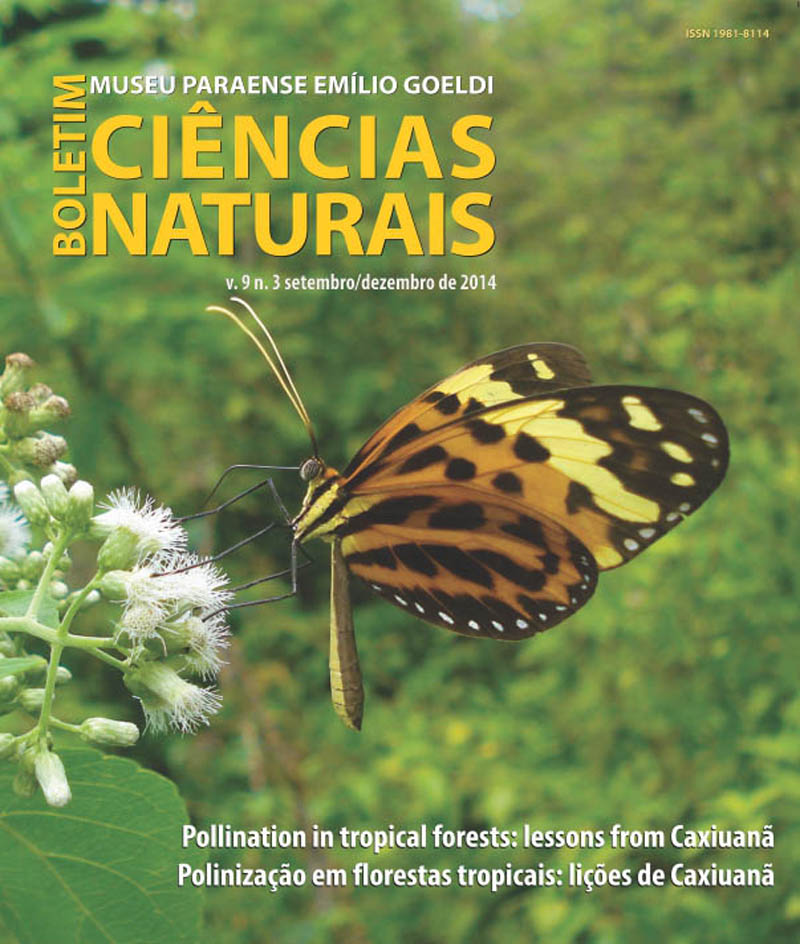Floral biology and visitors of Cordia nodosa: an Amazonian species with a dimorphic style
DOI:
https://doi.org/10.46357/bcnaturais.v9i3.504Keywords:
Distyly, Cordia, Floral polymorphism, Style dimorphismAbstract
The angiosperms show reproductive strategies that promote gene flow increasing genetic diversity (such as heterostyly), with differences in the height of the style and stamens between individuals. Changes in distylous systems have been documented and have promoted debate due to related evolutionary questions. The objective of this study was to describe the floral morphology of Cordia nodosa, its flower visitors, nectar production, pollen flow and reproductive system. The style height varied continuously among individuals, whereas the stamens were of a comparative uniform height. The pollen tubes on the stigma showed no indication of self-incompatibility, however, it was not possible to obtain data on the pollen tube growth rates which did not present the sporophytic self incompatible form. Bees collecting nectar and pollen were the most frequent visitors to the flowers. Wasps and butterflies were also observed visiting the flowers. We found a reduction in nectar production after the first withdrawal, which was interpreted as an energy saving strategy. Moreover, the presence of pollen and nectar as floral resources seems to support a functionally generalised pollination system.
Downloads
Published
Issue
Section
License
Publication means fully assigning and transferring all copyrights of the manuscript to the journal. The Liability Statement and
Assignment of Copyrights will be enclosed with the notice of acceptance. All the authors must sign the document and return it to the journal.






